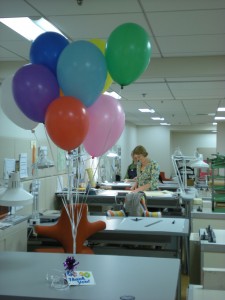 Removing prior repairs is one of those topics that elicits a lot of opinions from conservators (get four conservators around a table and you will have six opinions on the matter).
Removing prior repairs is one of those topics that elicits a lot of opinions from conservators (get four conservators around a table and you will have six opinions on the matter).
As often is the case, my answer to removing a prior repair is usually “it depends.” Is the repair damaging the item or simply aesthetically a mess? How damaging would the removal be and how much more damage are you willing to incur to remove it? What is the value and use of the item and how do these weigh with the physical risk to the item that the repair or its removal pose?
Do you hate it because it is just ugly? is that enough reason to remove it? If it is functioning but ugly, can you live with it?
I found this item in our stacks today. We must remember that not all items in our special collections started out as “special,” many started in the general collections and old-style repairs were not always aesthetically pleasing or reversable (things we strive for now). I suspect this may be the case for this particular item.
What I hate about this repair is that the black book tape is downright ugly. What I love about it is that the person who did it cared enough to write in the part of the title that was covered by the book tape. This is one we probably wouldn’t remove unless we had a better reason than “it’s ugly.” But then again…
Thanks to Noah Huffman for the image as I was caught without my camera in the stacks.











 It’s the end of the fiscal year and you know what that means…it’s statistics season! I’ve just finished compiling our FY2010-2011 stats and will now be subjecting them to feats of interpretation and contemplation.
It’s the end of the fiscal year and you know what that means…it’s statistics season! I’ve just finished compiling our FY2010-2011 stats and will now be subjecting them to feats of interpretation and contemplation. Big news! A new ALA ALCTS PARS award has been approved in honor of Jan Merrill-Oldham and her undying support for young professionals. You can read more about it over at
Big news! A new ALA ALCTS PARS award has been approved in honor of Jan Merrill-Oldham and her undying support for young professionals. You can read more about it over at 